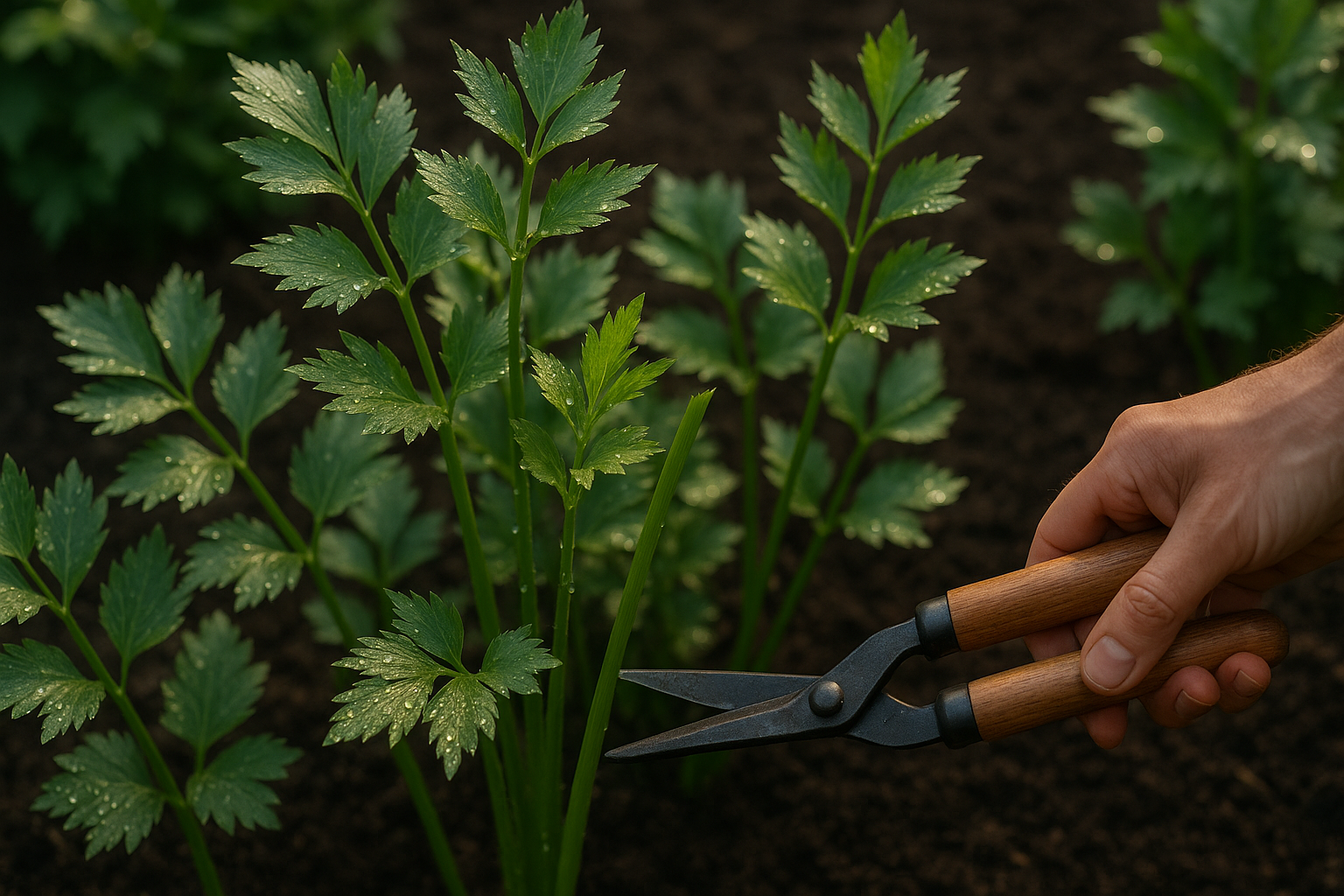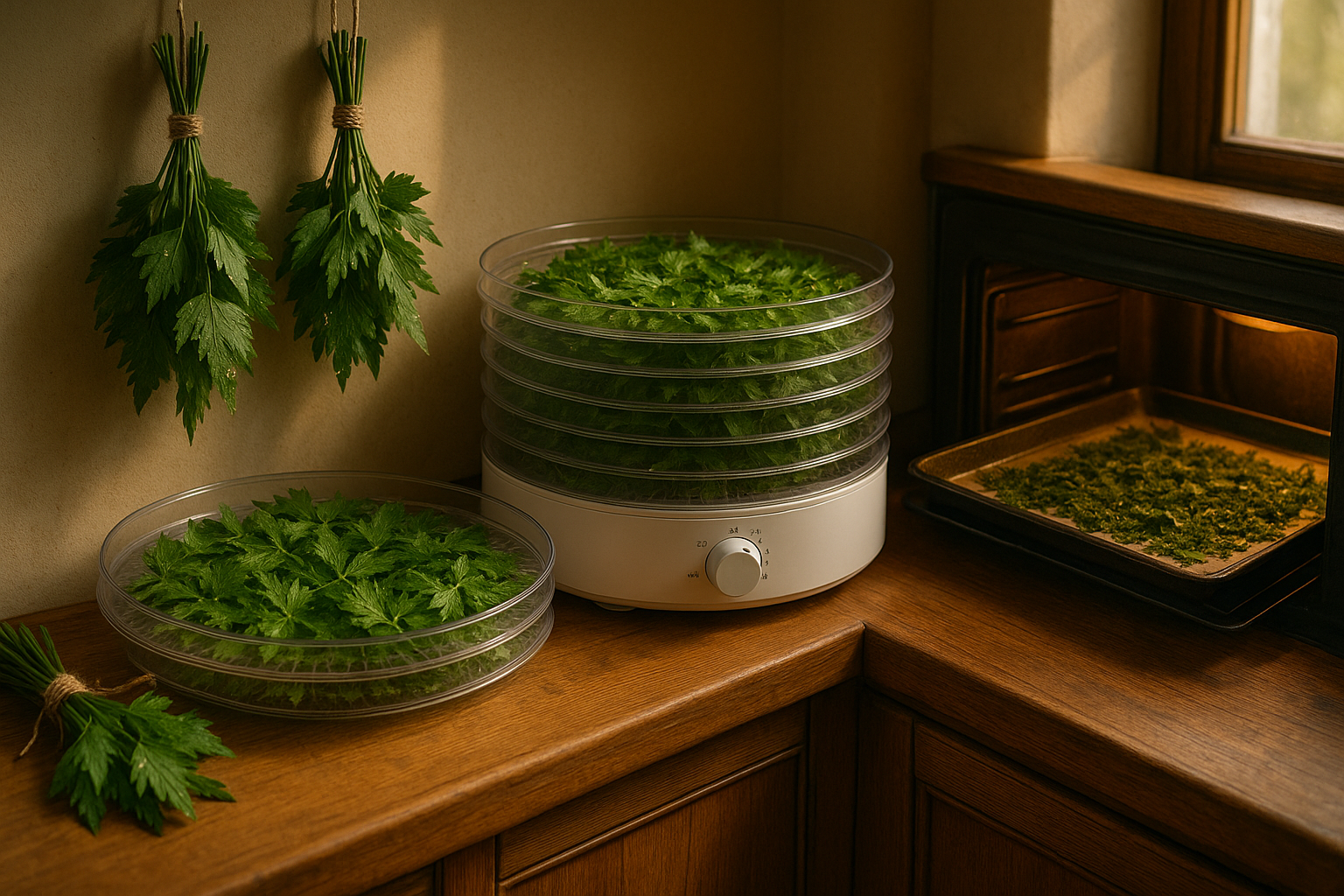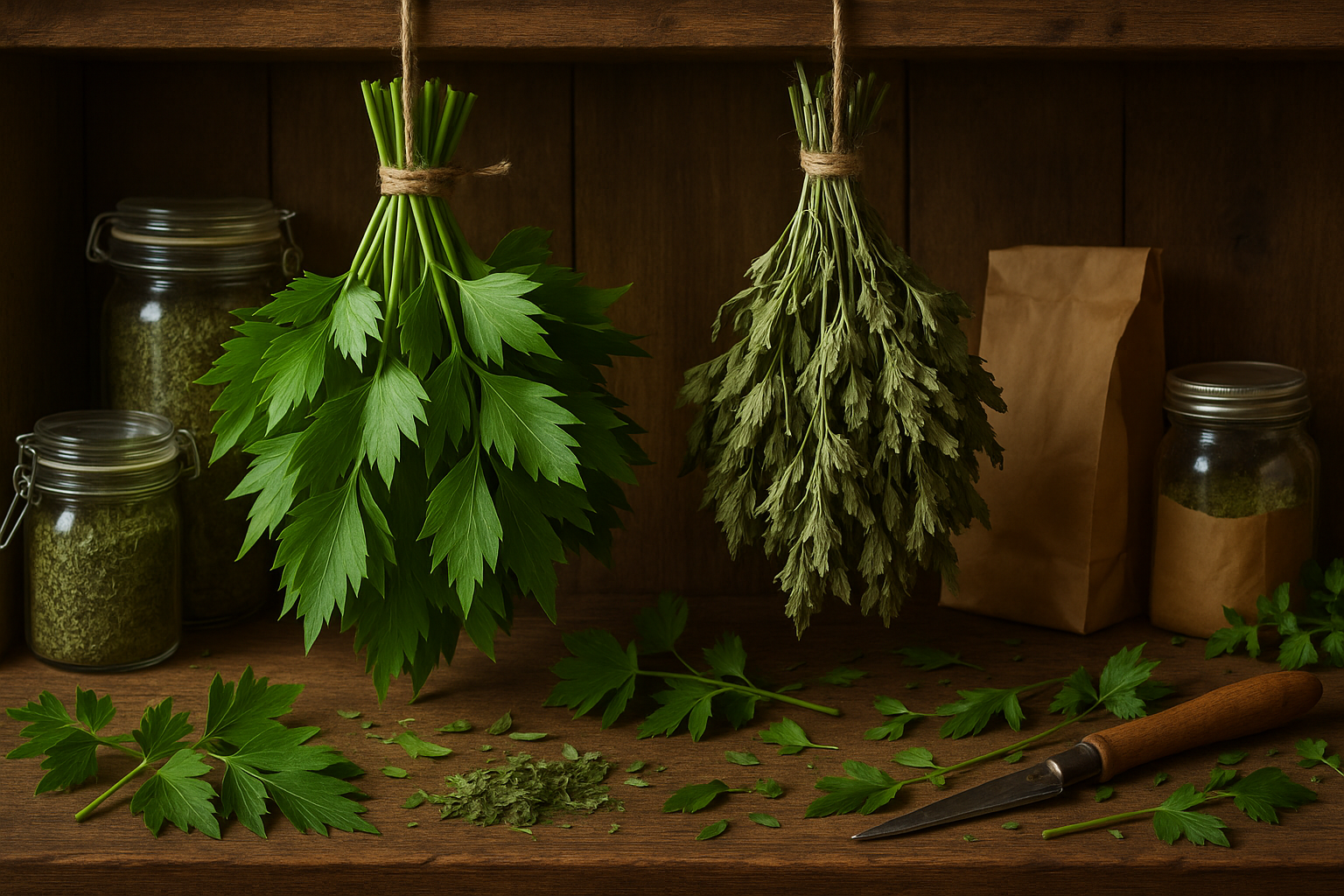Introduction to Lovage and Its Benefits
If you’ve ever been curious about drying lovage, you’re about to discover why this old-fashioned herb deserves a spot in your kitchen pantry. Lovage is a robust perennial, prized for its celery-like flavor and versatility in soups, stews, and broths, as well as its soothing properties in herbal remedies.
Traditionally, cooks and healers have turned to lovage not just for its savory taste, but also for its ability to support digestion, ease cold symptoms, and even freshen breath. Drying lovage at peak freshness lets you capture its vibrant aroma and health benefits for winter’s cold months—when fresh herbs are scarce and comforting, nutrient-rich meals are essential.
By preserving lovage now, you’ll have a ready supply for hearty winter dishes, medicinal teas, or even a traditional homemade lovage cordial. Get ready to enjoy this time-honored herb, no matter the season.
When and How to Harvest Lovage

Harvesting lovage at the right time makes all the difference in flavor and shelf life. Aim to gather leaves and stems in late spring to early summer when the plant is about 18 to 24 inches tall and before it starts flowering, as this is when the flavor is most intense.
Early morning is ideal—just after the dew has dried but before the heat of the day—to preserve essential oils and freshness. Choose young, tender stems and deep green leaves, avoiding any that show yellowing or damage.
For drying, select the healthiest bunches and snip them off with clean scissors or garden shears, ideally from the outer part of the plant to encourage regrowth. Lay the leaves flat or hang the stems in small bundles somewhere dry and well-ventilated.
If you want to harvest lovage seeds, wait until late summer or early fall when the flower heads turn brown and dry. Cut the seed heads, place them in a paper bag, and let them finish drying. Gently shake out the seeds and store them in an airtight container.
Regular harvesting keeps lovage abundant and flavorful throughout the growing season.
Preparing Lovage for Drying
Preparing lovage for drying begins with a gentle yet thorough cleaning. Rinse the stems and leaves under cool running water to remove any dirt or tiny bugs, swirling them softly without crushing the delicate foliage. Use your fingertips to inspect each stem, snipping off any yellow, wilted, or damaged sections with kitchen shears to ensure the best flavor and a clean final product.
Once washed, shake off excess moisture and lay the lovage in a single layer on a clean dish towel. Gently pat it dry—avoid rubbing, which can bruise the leaves and cause flavor loss.
When it comes to cutting, consider your end use:
- If you plan to crumble the lovage later, chopping before drying can save time. However, smaller pieces may dry faster and lose volatile oils.
- For maximum flavor retention and less risk of bruising, many herb enthusiasts recommend leaving leaves whole and snipping them only after drying.
Whichever method you choose, handle the leaves gently throughout the process. Rough handling can cause bruising or the loss of essential oils that give lovage its signature taste.
Drying Methods for Lovage

Air drying is one of the simplest and most effective ways to preserve lovage. It works best in dry, warm, and well-ventilated areas out of direct sunlight. To use this method, gather lovage stems into small bunches, tie them with kitchen twine, and hang them upside down. Spacing is crucial—leave enough room for air to circulate and prevent mold. This process can take one to two weeks, depending on humidity, and will preserve the herb’s flavor quite well.
For a quicker option, a food dehydrator offers precision and convenience. Spread lovage leaves on dehydrator trays in a single layer, set the machine to a low temperature (95–115°F or 35–46°C), and check after 2–4 hours. The lower temperature helps retain more of lovage’s distinctive aroma and nutrients.
If you’re short on time, oven drying is a practical alternative. Set the oven to its lowest temperature, ideally around 170°F (75°C) or lower. Place lovage on a baking sheet in a single layer and prop the oven door slightly open to release moisture—check every 30 minutes, and expect drying to finish within 1–2 hours. Always monitor closely to avoid scorching, as ovens can be less precise.
When comparing methods, air drying and dehydrators score highest for flavor and color preservation, though air drying takes longer and depends on weather. Oven drying is faster, but the intense heat can dull the herb’s delicate taste, making it better suited for those in a hurry rather than for culinary perfection.
Storing Dried Lovage for Winter
To keep your dried lovage fresh and flavorful all winter, choose airtight storage containers like glass jars or metal tins with tight-fitting lids. These are excellent at blocking out moisture and air, which can quickly degrade your herbs. Avoid plastic bags or flimsy containers, as they can easily let in humidity and are more likely to attract pests.
Make sure to label each container with the herb’s name and the date you dried it; herbs can look similar, and labels ensure you don’t lose track of their age.
Store your dried lovage in a cool, dark place, such as a pantry cupboard away from the stove or sunlight. Prolonged exposure to heat and light breaks down essential oils and flavor.
Properly stored, dried lovage can last up to a year and sometimes longer, though its taste is best in the first 6–9 months.
To prevent moisture, always let the herbs fully cool after drying before sealing them up, and consider slipping in a food-safe desiccant packet for extra protection. Check jars occasionally for clumping or condensation, which signals moisture intrusion. Use smaller containers if you only use lovage occasionally to reduce how often you expose your stash to air.
Creative Ways to Use Preserved Lovage
Preserved lovage is a delicious way to keep vibrant, savory flavors alive in your winter kitchen. Dried lovage leaves add a celery-like zing to hearty soups and stews—simply crumble a few leaves into the pot for a complex herbal lift.
The seeds, which are more intense and subtly bitter, shine when used sparingly in root vegetable roasts or sprinkled over homemade rye bread before baking. Think of lovage seeds like celery seeds: perfect in pickling brines or mixed into winter cucumber salads.
For an easy, custom seasoning blend, combine crushed dried lovage leaves with dried parsley, onion flakes, and black pepper. This mix works beautifully in savory tea infusions or stirred into creamy potato chowders.
For an herbal twist on classic winter tea, steep a pinch of lovage leaves with chamomile and lemon balm to ease digestion and add warmth to chilly evenings.
Conclusion and Final Tips
Drying and storing lovage is simple: cut healthy stems, wash and pat them dry, tie them into bundles, and hang in a well-ventilated area away from sunlight. Once the leaves become crisp, crumble them and store in airtight containers.
Don’t be afraid to get creative with your dried lovage—add it to soups, stews, or homemade spice blends for a punch of celery-like flavor all winter long. Start by experimenting with small amounts to find what you like best.
Have your own tips or favorite ways to use lovage? Share your ideas in the comments and inspire others in the community!
